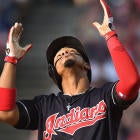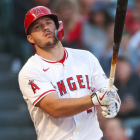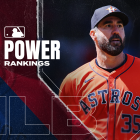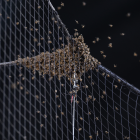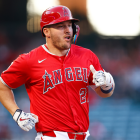Too often we use, say, RBI totals or a hitter's numbers with runners in scoring position as a stand-in for clutch performance. While the notion of being clutch will mean different things to different people, these aren't effective ways to gauge it. RBI totals are highly dependent upon the on-base skills of one's teammates, one's position in the batting order, and the number of opportunities. As for RISP, putting up big numbers in such situations doesn't necessarily mean those are important situations (e.g., a hitter can come up with RISP in a game in which the score is 11-2).
So what's a better way? What we're seeking to do is highlight high-leverage situations -- those spots in which the outcome of the game hangs in the balance. Stated another way, a high-leverage plate appearance has the potential to determine who wins or loses a given game. Bottom of the ninth, home team down by a run, runner on third with two outs? High-leverage in the extreme. Top of the seventh, 8-0 game? Low-leverage.
When it comes to evaluating performance in high-leverage situations -- i.e., a hitter's clutch performance -- there are two general questions that need to be answered:
- What are the hitter's raw overall numbers in high-leverage spots?
- How do the hitter's numbers in high-leverage spots compare to his overall numbers?
On the first one, the inestimable Baseball-Reference is here to help. Go to a player's page, search his splits, and you can find his performance in high-leverage situations for his career or a given season. As for the second query, FanGraphs provides us with a pretty nifty answer.
With the measure they call "Clutch," FanGraphs calculates how much better (or worse) a player performs in high-leverage spots relative to his production in all other situations. It's important to note that player with a good Clutch score isn't necessarily a productive hitter clutch situations -- it just means he's been better in those spots than he has been in others. To cite an extreme example, a player who's bad overall but merely mediocre in clutch spots would have a good clutch score. Since the scale is going to be unfamiliar to most readers, here's a rough guideline via FanGraphs:
| RATING | CLUTCH |
|---|---|
Excellent | 2.0 |
Great | 1.0 |
Above average | 0.5 |
Average | 0.0 |
Below average | -0.5 |
Poor | -1.0 |
Awful | -2.0 |
Eyeballing both raw production in high-leverage spots and the Clutch score is important to get a full view.
All of this brings us to the hotly contested MVP races in each league for 2018. Over a large enough sample, there's not really such thing as a true clutch hitters -- hitters tend to find their overall level in time. In the context of a single season, though, you do see clutch performances. It's not typically sustainable, but it matters. It also says here that it's appropriate to consider clutch performance for purposes of MVP voting.
Limiting this particular discussion to position players (a pitcher or three can be considered a viable MVP candidate in the NL this season), let's see how the leading MVP candidates compare on the clutch front. First up, the National League:
| PLAYER (ALPHABETICAL ORDER) | High-leverage AVG/OBP/SLG | Clutch |
|---|---|---|
.318/.404/.565 | -0.12 | |
.255/.297/.461 | -0.21 | |
.329/.435/.434 | 0.16 | |
.294/.451/.529 | 0.02 | |
.306/.392/.471 | -0.61 | |
.302/.406/.570 | 0.28 | |
Christian Yelich, Brewers | .330/.387/.596 | 0.32 |
No one really stands out in in terms of clutch -- all candidates in the NL fall within the implied bands of "average." Really, not much should move the needle here. Ding Baez just a little if you want, and give Cain and Goldschmidt a slight boost. Otherwise, there's not much determinative to be found.
And what of the AL? Let's have a look:
| PLAYER (ALPHABETICAL ORDER) | High-leverage AVG/OBP/SLG | Clutch |
|---|---|---|
.333/.481/.807 | 0.32 | |
.333/.442/.516 | 0.98 | |
.333/.463/.648 | 1.00 | |
J.D. Martinez, Red Sox | .438/.500/.825 | 0.65 |
Jose Ramirez, Indians | .329/.432/603 | -1.21 |
.226/.463/.321 | -2.12 |
Here you see some impressive performances at both the AVG/OBP/SLG and Clutch levels. The first four names on that list all stand out in that regard. Meantime, you can definitely hold Trout's clutch performance against him this season when it comes to the MVP award (Trout is last among all AL qualifying hitters in Clutch this season).
Bear in mind that we're talking about relatively small samples when it comes to clutch outputs, so there's still enough calendar left for those numbers to change significantly. Also bear in mind that what you see above is almost entirely the result of said small sample, and thus no value judgments should flow from it. Trout, for instance, went from one of the least clutch players in baseball in 2013 to one of the most clutch players in 2014. That's because it's mostly randomness.
All that said, if you wish to take clutch performance into account when declaring who should win the MVP, then this is your roadmap.













